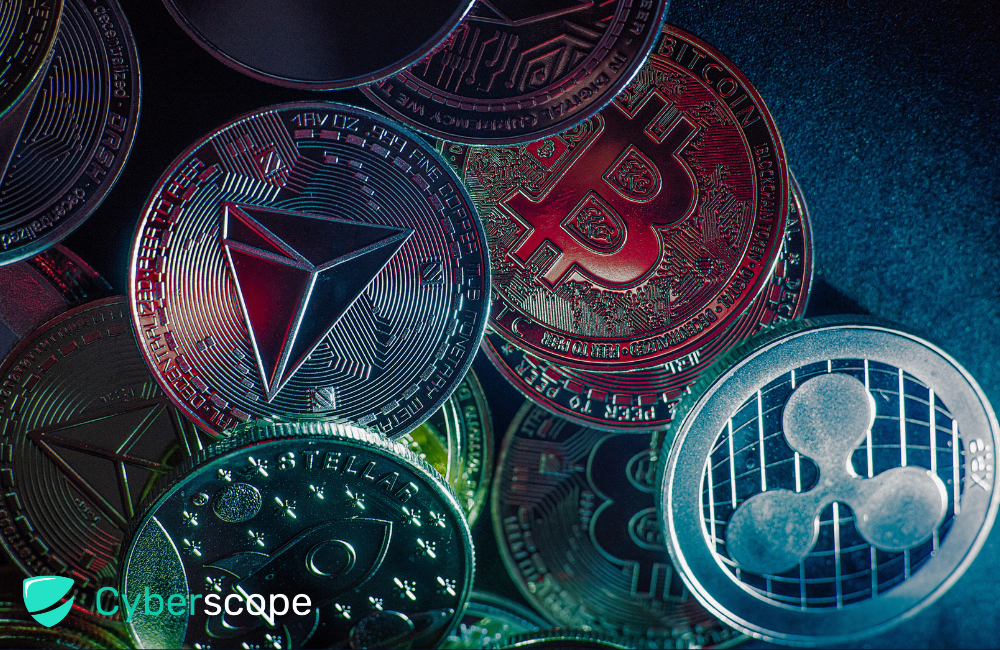

What Is ERC-404? Everything You Need To Know

Introduction
In the dynamic world of blockchain and cryptocurrency, new innovations are constantly emerging to push the boundaries of what’s possible. One such innovation that’s been generating buzz in the Ethereum community is ERC-404. In this comprehensive guide, we’ll delve deep into the intricacies of ERC-404, exploring its origins, mechanics, significance, and future prospects.
What Is ERC-404?
Developed by pseudonymous creators “ctrl” and “Acme,” ERC-404 is an experimental token standard and an innovative approach that combines the features of ERC-20 tokens (fungible, divisible like money) and ERC-721 tokens (non-fungible, unique like NFTs). It introduces the concept of “semi-fungible” tokens, allowing individuals to own fractions of a single NFT. This unique characteristic unlocks exciting possibilities for fractional ownership of valuable digital assets, increased liquidity for NFTs, and novel DeFi applications offering unprecedented flexibility in the digital asset space.
Quick Link: What is an NFT? What are the 5 most expensive NFTs ever sold?

How ERC-404 Tokens Work
Mechanics of ERC-404
At the heart of ERC-404 lies a mint-and-burn mechanism that enables the fractional ownership and transfer of non-fungible tokens. This mechanism allows ERC-404 tokens to be divided into smaller units, democratizing access to valuable digital assets and enhancing liquidity in the market. By owning fractions of an ERC-404 token linked to an NFT, users can participate in shared ownership arrangements and contribute to the minting of new NFTs.
Each ERC-404 token represents a specific fraction of the NFT, with the total supply mirroring the number of fractions available. Users can acquire individual tokens or accumulate enough to “burn” them, receiving the full NFT in return. Here’s a more detailed look at how ERC-404 tokens work:
- Combination of ERC-20 and ERC-721: ERC-404 tokens are designed to function both as fungible and non-fungible tokens. They achieve this by linking every issued token (fungible) to an NFT (non-fungible), allowing for a blend of the characteristics of both token types.
- Fractional Ownership of NFTs: One of the key features of ERC-404 tokens is their ability to enable fractional ownership of NFTs. This is accomplished by associating a fungible token with an NFT, allowing the NFT to be divided into smaller, tradable parts. This mechanism enhances liquidity and accessibility in the NFT market.
Dynamic Minting and Burning: When a fractional token representing part of an NFT is traded, the associated NFT can be dynamically minted or burned. If a fraction of a token is sold, the linked NFT is burned, and if more fractions are added to make a whole token, a new NFT is automatically minted. This process allows for the seamless exchange and modification of NFT ownership and characteristics based on the underlying fungible token transactions.

Significance and Use Cases Significance and Use Cases
By allowing fractional ownership, ERC-404 tokens can significantly improve the liquidity of NFTs. This makes it easier for buyers and sellers to trade parts of an NFT without needing a ready counterparty to purchase the entire asset, addressing a common limitation in the traditional NFT market. The unique blend of fungibility and non-fungibility opens up new possibilities for NFT projects and applications, including but not limited to:
- Art & Collectibles: By embracing fractional ownership, individuals gain more accessible entry points into acquiring high-value artwork or rare collectibles, democratizing access to these traditionally exclusive assets.
- Real Estate: Through the tokenization of real estate assets, investors can enjoy the benefits of fractional ownership, facilitating easier access to real estate investments and diversification of portfolios.
- Gaming & Metaverse: In the gaming and metaverse realms, fractionalization enables more efficient trading of in-game assets and virtual land, fostering a more dynamic and accessible virtual economy.
- Decentralized Funding: Fractionalized shares of startups or projects offer an avenue for community investment, allowing individuals to participate in funding initiatives and projects that align with their interests and values.
Also Read: Top Blockchain Security Companies for Robust Protection

Projects and Adoption Projects and Adoption
The adoption of ERC-404 is gaining momentum, with several pioneering projects leading the charge. From Pandora to DeFrogs, these projects are exploring the possibilities offered by ERC-404 and showcasing its potential to transform the digital asset landscape. As more projects embrace ERC-404, we can expect to see a proliferation of semi-fungible tokens across diverse ecosystems.
Let’s explore some of these projects:
- Pandora (PANDORA): The first project built on the ERC-404 standard, exemplifying the standard’s capabilities by linking every issued token to an NFT, enabling the fractionalization and trade of NFTs in a novel way.
- DeFrogs (DEFROGS): Following the success of Pandora, DeFrogs emerged as another project utilizing the ERC-404 standard. It features a collection of 10,000 frog PFPs (Profile Picture NFTs), where buying a DeFrogs token equates to minting an NFT.
- Monkees (MONKEES): Monkees is a newer entrant in the ERC-404 space, offering a collection of monkey PFPs. Monkees has seen substantial growth despite its recent launch, capitalizing on the ERC-404 standard to facilitate NFT trading and ownership.
Additional projects like Punks404 (PUNK) and EtherRock404 (ROCK) also leverage the ERC-404 standard, although they vary in market cap and trading volume.

Challenges and Future Prospects Challenges and Future Prospects
Why the Hype Around ERC-404 Standard?
The ERC-404 standard represents a significant advancement in the blockchain and NFT (Non-Fungible Token) space, generating considerable hype and interest from both the crypto community and broader markets. This standard addresses some of the most pressing issues in the NFT market, including:
- Addressing NFT liquidity challenges
- Unlocking new DeFi possibilities
- Early-stage potential
- Recent ERC-404 projects like “Pandora” experienced significant price surges, fueling the market hype around the standard’s potential.
Challenges and Considerations
The ERC-404 standard is currently unaudited and has not undergone the traditional Ethereum Improvement Proposal (EIP) and Ethereum Request for Comments (ERC) processes. This lack of formal vetting raises concerns about potential vulnerabilities and inefficiencies and the risks of integrating unaudited and potentially flawed systems into projects within the Ethereum ecosystem.
Furthermore, the integration of fungible and non-fungible characteristics into a single token standard presents unique technical challenges, requiring careful implementation and testing to ensure security and functionality. Additional challenges around ERC-404 tokens you should be aware of include:
- Liquidity Concerns: While ERC-404 aims to enhance liquidity for NFTs through fractional ownership, the actual liquidity of these tokens hinges on several factors, such as user adoption, platform support, and overall market conditions. Early projects might encounter liquidity hurdles until broader acceptance of the standard is achieved.
- Limited Adoption: ERC-404 is in its early stages, with relatively few projects and users adopting it compared to established standards like ERC-20 and ERC-721.
- Technical Challenges: Implementing ERC-404 poses technical complexities and potential security risks that necessitate further development and refinement. Integrating tokens with both fungible and non-fungible traits introduces challenges in adapting existing platforms and wallets to handle such hybrid tokens. NFTs themselves suffer from a plethora of attacks, so overcoming the security challenges can prove extremely complex.
- Speculative Investments: Investments in ERC-404 projects are highly speculative due to their experimental nature. Market enthusiasm may be driven more by novelty and speculation than intrinsic value, heightening the risk of market bubbles and subsequent crashes.
- Regulatory Uncertainty: The unique characteristics of ERC-404 tokens could attract regulatory attention, especially amid ongoing debates on how to regulate cryptocurrencies and NFTs globally. Evolving regulatory frameworks may influence the adoption and functionality of ERC-404 tokens.
Conclusion
The emergence of ERC-404 represents a significant development in the Ethereum ecosystem, signaling a shift towards more flexible and innovative token standards. As the standard continues to evolve and potentially undergo formal audits as well as vetting processes, it may pave the way for a new era of digital asset management and trading, offering enhanced functionality, liquidity, and utility for Ethereum-based tokens.
While still in its early stages, the ERC-404 token standard holds immense potential to revolutionize how we interact with digital assets on Ethereum. Its ability to bridge the fungibility gap opens doors for innovative use cases, increased liquidity, and novel DeFi applications.
Frequently Asked Questions (FAQ):
- What is the ERC-404 token standard?
The ERC-404 token standard is an experimental approach that blends the features of ERC-20 and ERC-721 tokens, enabling semi-fungible tokens with characteristics of both fungible and non-fungible assets.
- How do ERC-404 tokens work?
ERC-404 tokens leverage smart contracts to manage fractional ownership of non-fungible tokens (NFTs), allowing users to own fractions of NFTs and trade them seamlessly.
- What are some potential use cases for ERC-404 tokens?
ERC-404 tokens can democratize access to high-value assets like art and collectibles, enable fractional ownership of real estate, facilitate trading of in-game assets, and offer fractionalized shares of startups for community investment.
- What are some notable projects using the ERC-404 standard?
Pandora, DeFrogs, and Monkees are leading projects utilizing the ERC-404 standard, each offering unique implementations and applications within the Ethereum ecosystem.
- What are the main challenges associated with ERC-404 adoption?
Challenges include liquidity concerns, limited adoption compared to established standards, technical complexities, speculative nature of investments, security issues, and regulatory uncertainty surrounding the standard.
- How does ERC-404 contribute to the Ethereum ecosystem?
ERC-404 represents a significant advancement in digital asset management and trading, offering enhanced liquidity, fractional ownership, and innovative DeFi applications within the Ethereum ecosystem.
Recent Posts


What is a Fallback Attack in Smart Contracts?
3 months ago
How Secure are Solana Smart Contracts?
5 months ago
